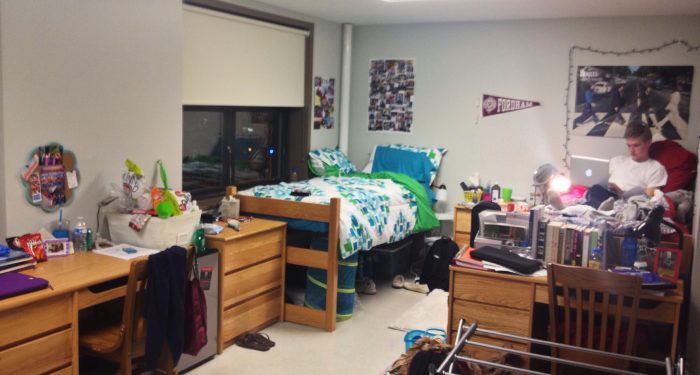Mike Dobuski/The Ram While they may wish they had the space afforded by a double, most students can successfully adjust to life in a triple.
At any university, incoming freshmen will have a variety of anxieties about beginning their collegiate journey, ranging from worrying about their future GPA to wondering if the campus food will actually be as bad as the rumors make it out to be.
For the soon-to-be Fordham student, there is another worry to be added to that list — the threat of placement in a forced triple. Even though these rooms come with a reduced housing cost, not enough students opt for them voluntarily, causing many freshmen to be placed in triples against their will.
Forcing these residents to live in such close quarters may seem ridiculous to some, but Fordham really has no choice. Each year, more and more students choose to enroll, causing a housing shortage.
With the freshman class increasing in size year after year, an obvious strain is placed on the limited first-year housing. Fordham’s Office of Residential Life has no immediate fixes to this issue other than what they are presently doing — creating triples.
For those who have not experienced living in one of these rooms firsthand, the whole situation probably seems extremely undesirable. But, what is living in one of these converted triples actually like?
In most cases, two of the beds are bunked and the third is lofted. Many rooms have a ladder or two, taking up even more of the small amount of floor space that the room has to begin with. The residents of the room are forced to split two closets between the three of them. This setup could prove to be even more inconvenient in Martyrs’ Court, which has the smallest rooms at 11 feet by 16 feet.
“It’s a pretty cramped space for three girls…we have a lot of stuff in a small room,” Maggie Senft, FCRH ’17, said.
Although it may seem surprising to some, many students have actually had an extremely positive experience living in a triple. Elena Meuse, FCRH ’16, cites a lack of privacy as being the only downside for her. Not having much alone time does, however, seem to foster an enriching sense of community among the residents.
“It was actually more fun because there was a group of three people instead of just two,” Meuse said.
For the new freshmen nervous about forging relationships, their transition can be made easier by having an additional built-in friend. These freshmen are able to make a multitude of connections they would not make otherwise, allowing them to expand their web of friends earlier in the year.
“You definitely meet a lot more people because you’re introduced to many new friends through your roommates,” Veronica Figueras, GSB ’16, said.
So, is living in a converted triple really that bad? Despite what many may think, these residents were able to overcome their less-than-ideal living situation to find the silver lining.
When asked if, knowing what she knows now, she would choose to live in a triple again, Meuse said that she definitely would.





